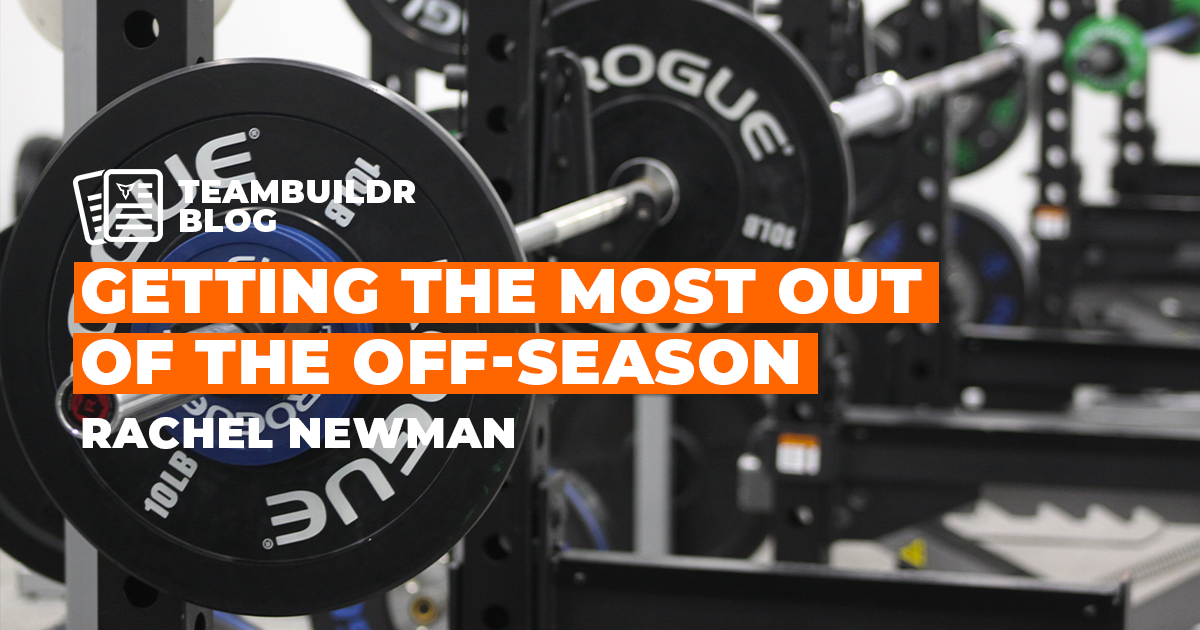From the GA's Desk: Creating Value Beyond Sets and Reps
Author Tyler Stasiowski is a Graduate Assistant Strength & Conditioning Coach at Springfield College.
Mental health concerns in sports are becoming more and more apparent. Athletes experience more mental health struggles due to increased training load, tough competitions, and a different lifestyle versus a non-athlete (Stambulova, Schinke, & Moore, 2018). Here at Springfield College, although a Division III school, our athletics are treated a little differently from other schools at the same level. Springfield College’s philosophy is about educating the whole person in spirit, mind, and body for leadership in service to others. Springfield College is very fortunate to have an incredible weight room, various outdoor facilities, and playing fields/courts. The student-athlete workload is extensive due to attending classes, practicing 1.5-2 hours a day, games during the week, and their weight room commitment 2-3 days a week. With a large workload, sometimes the athletes just aren't motivated to be in the weight room.
Perceived Role of the Strength and Conditioning Coaches:
According to many sport coaches, strength and conditioning coaches are perceived to be the “thermostat” and help bring the “juice” before each session. As a thermostat sets the temperature in a house, strength coaches set the tone for the workout while limiting outside stressors or influences to affect the environment.
In a similar metaphor, “Bring the juice” refers to the strength coach’s ability to motivate and “fill up the empty glasses” of their athletes with motivational quotes or speeches in an attempt to help the athletes succeed for the session.
Sometimes teams come into the weight room sluggish or unmotivated. When this happens, strength and conditioning coaches should attempt to increase athletes’ motivation and cohesion as they are linked to enhancing performance (Carron, Bray, Eys, 2002).
Bringing the juice can be helpful, but it’s not always what the athletes need the most. It is crucial that we not only energize the athletes, but that we also provide a positive atmosphere throughout the training session. By encouraging and supporting the athletes during training, we are able to develop the team culture as well as create buy-in.
Creating Team Culture
Team culture can often be built by the sport coach as well as inside the weight room. We can develop an effective team culture by developing pride in membership/team identity (Yukelson, 1997). Creating identity is showing the team goal or performance dashboards on monitors or on the athlete’s cards to remind them what they are doing in here is going to transition to the field, court, mat, pool, and gymnasium.
Another way to build effective team culture is having team goals, progress charts, and tracking. A way to track progress would be by creating a dashboard and projecting it. For instance, if we time flying 10’s with a speed gate, then consider projecting it on a monitor as it shows the progression from athlete to athlete. Yes, the athletes are competitive with one another, but strength and conditioning coaches can show everyone’s progress over the duration of their training cycle. As a strength and conditioning coach, giving the athletes praise for decreasing their time can help them gain confidence to continue to be motivated to come in the weight room.
Strength and conditioning coaches have an important role in developing and increasing social cohesion within the weight room setting. Social- cohesion focuses on developing & maintaining relationships/enjoying others’ company (Brawley, Carron, Widmeyer, (1985). That could be having a team competition at the end of a session such as a dead hang challenge, a mental game where you have to concentrate on what the coach says, or an Air Dyne challenge where there’s a foam roller and the objective is to go as fast as you can trying to move the foam roller past a certain distance. Any way to bring everyone together to cheer each other on helps increase a positive social environment in the weight room.
Having a good culture can also create buy-in. Some examples of developing an effective culture are providing goal evaluation (positive and constructive feedback), setting team goals, creating progress charts, and having open communication with the athletes.
Practical Application as Strength and Conditioning Coaches
Make the weight room an enjoyable place and not just another task. We do see the athletes a lot more than sports coaches. I want the athletes to understand to work hard and I think doing the little things to show that we care can help build trust along the way.
Going around the weight room and saying things like, “Let’s keep up the good work!”, “Great rows...I like how you found your lat at the top!”, or “Great tempo on those eccentric chin-ups!” can be incredibly valuable and rewarding to the athletes.
Of course, we’ll correct them if something doesn’t look right. But, we don’t want to always correct them, sometimes if they see you walking over they might say “What am I doing wrong now?” We don’t want to have those negative thoughts. We want to encourage, be positive, and having positive self-talk can go a long way. To help minimize these negative thoughts, strength and conditioning coaches can utilize the “feedback sandwich” A feedback sandwich is;
- Starting with a positive comment
- Followed by constructive criticism
- Ends with positive words of encouragement
An example is seeing an athlete doing single-arm dumbbell rows and you notice they are pulling with their shoulder. A strength and conditioning coach would walk over and say, “Hey Tim! I like the way you kept your back flat during these rows. Let’s try pulling with your elbow and squeezing your lat instead of using your shoulder to row. Let me know how that feels and continue to keep up the good work!” There is a positive comment, a constructive criticism, and ending with a positive word of encouragement.
One important thing that sticks out to me is asking more open-ended questions to the athletes. Asking more open-ended questions to the athlete’s allows us as strength and conditioning coaches to get to know the athletes more which allows us to build those relationships. Our goal is to get the athletes stronger, but that’s the easy part; the athletes will get stronger through consistency in the weight room. More importantly, strength and conditioning coaches want the athletes to leave here better people. This simple action shows the athletes that we as strength coaches aren't just there to get you ready for the season, and get you through the session, but we’re also here to build relationships with you.
Strategies for positive to build relationships and buy-in:
- On the lift card, have a quote that the team says. For instance, with my cross country team, we end each session saying Chen Chen, so I say or put Chen Chen on their card. Chen Chen means Cheney (Springfield College Dining Hall) and athletes are encouraged to refuel after every practice or lifting session.
- Another example is embracing the tradition associated with my men’s lacrosse team. They go by chief dawgs. Chief dawgs have been around for years at Springfield College. It’s their tradition to call themselves the “dawgs”.
- Give the teams autonomy during the lift. Try to get everyone involved to help build team cohesion. Some examples of giving teams autonomy are allowing them to choose what to do for a finisher or allowing one of the athletes to run the warm-up.
- Include the athletes who are outside the circle or on the fringe (if you’re a golf person you’ll understand). Fringe means on the outside of the green. We want everyone to feel included.
Example: Men’s Lacrosse at Springfield College always run the exercise “Cook Squats”. The captain on the team calls out who gets to run the Cook Squats and he includes all the first years who don’t speak as much.
Strength and conditioning coaches are more than squat depth watchers and whistle blowers. Instead of programming the x and y’s, S&C coaches’ role has evolved over the years. Strength and conditioning coaches encourage and support the athletes during training. The ultimate goal is to create better people, develop better athletes physically and mentally, and create a positive environment in the weight room improve all aspects of life.
References
Albert V. Carron, Steven R. Bray & Mark A. Eys (2002)
Team cohesion and team success in sport, Journal of Sports Sciences, 20:2, 119-126, DOI: 10.1080/026404102317200828
Carron, A. V., Widmeyer, W. N., & Brawley, L. R. (1985).
The development of an instrument to assess cohesion in sport teams: The Group Environment Questionnaire. Journal of Sport and Exercise psychology, 7(3), 244-266
Schinke, R. J., Stambulova, N. B., Si, G., & Moore, Z. (2018).
International society of sport psychology position stand: Athletes’ mental health, performance, and development. International journal of sport and exercise psychology, 16(6), 622-639.
Subscribe to our blog
Subscribe to receive the latest blog posts to your inbox every week.
Related posts

Maximizing Off-Season Training: Strategies for Success

Compound Training for the Year-Round Athlete: A Strength Coach’s Guide


